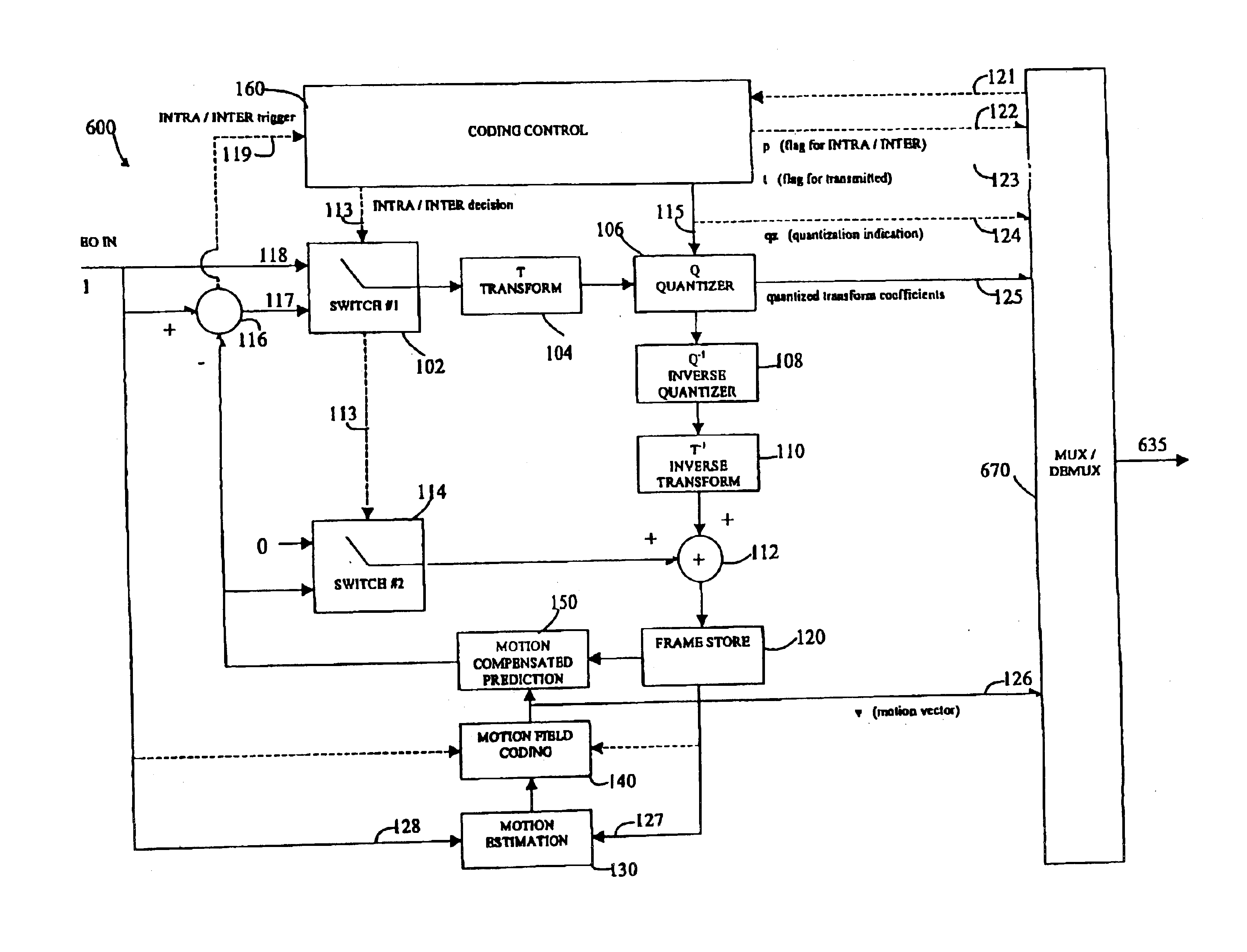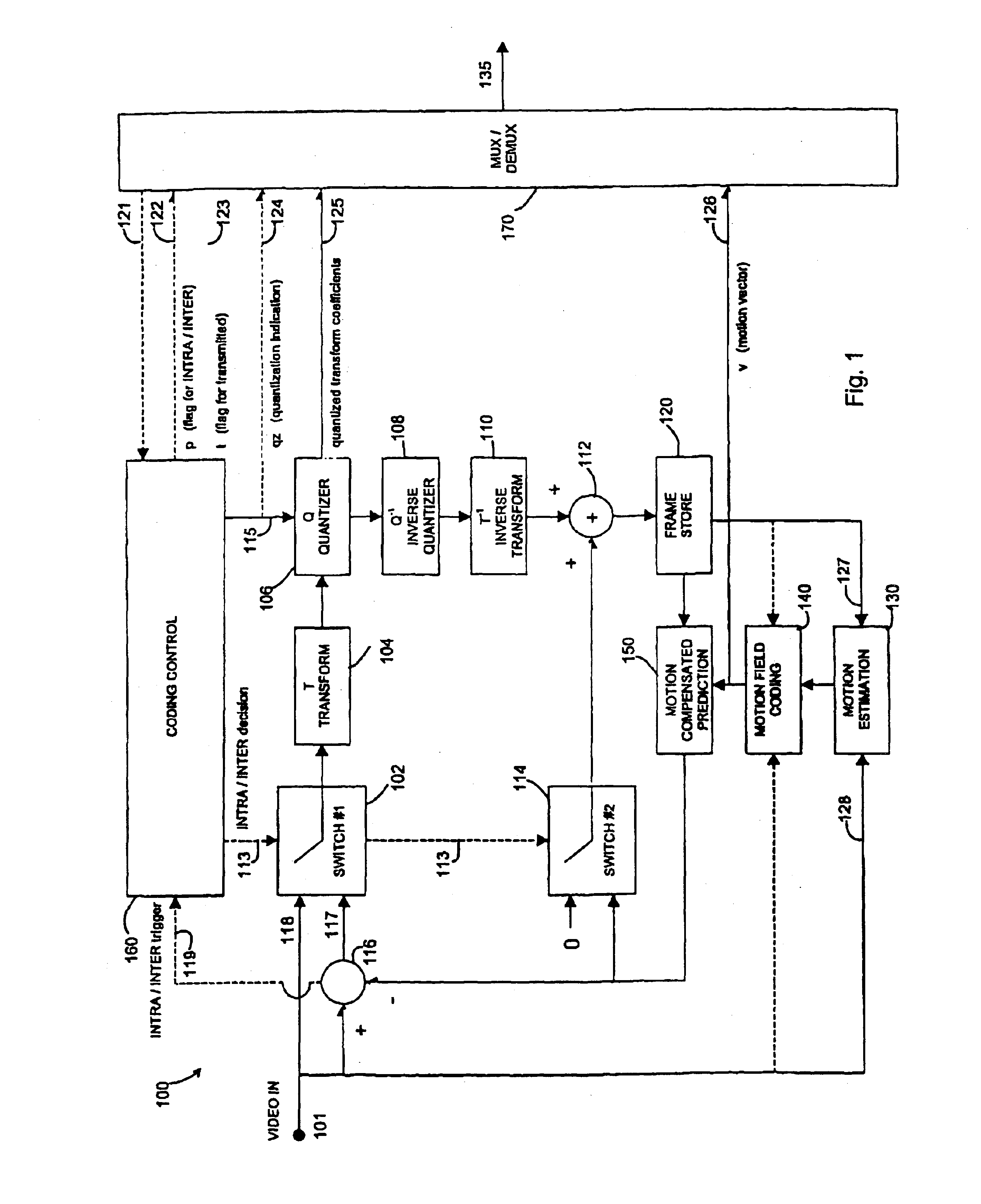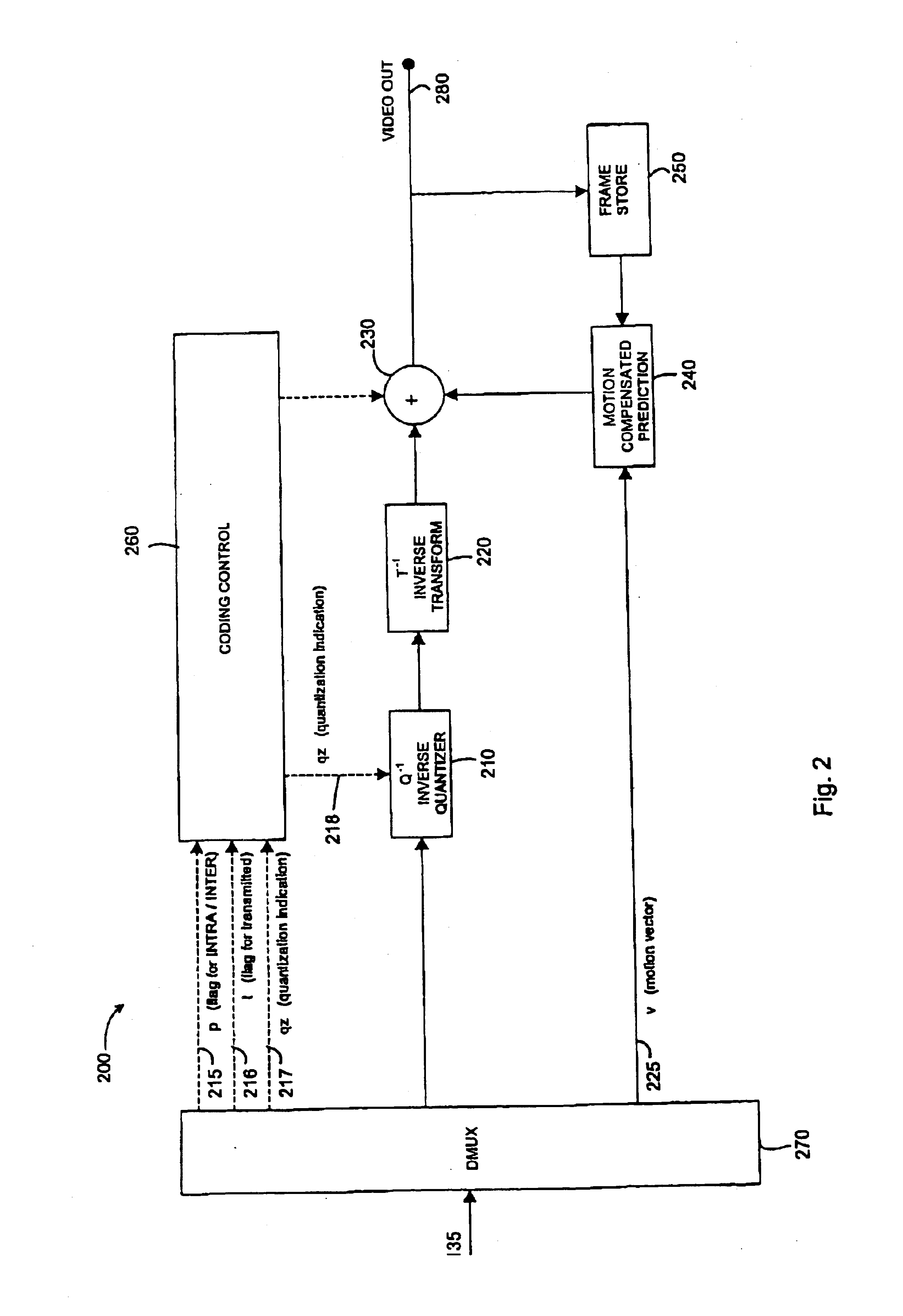Adaptive variable length coding of digital video
a variable length coding and video technology, applied in the field of variable length coding of data symbols, can solve the problems of extremely high data rate, large amount of redundant information, and large amount of data, and achieve the effect of improving the adaptability of variable length coding methods, low computational complexity, and good error resilien
- Summary
- Abstract
- Description
- Claims
- Application Information
AI Technical Summary
Benefits of technology
Problems solved by technology
Method used
Image
Examples
Embodiment Construction
In the detailed description of the invention which follows, an exemplary embodiment of the method according to the invention is presented. The exemplary embodiment relates to the variable length coding of (run, level) pairs representing non-zero-valued transform coefficient produced as a result of block-based transform coding in a video encoder, as well as their subsequent decoding in a corresponding video decoder.
FIG. 6 is a schematic block diagram of a video encoder 600 in which the method according to this embodiment of the invention may be applied. The structure of the video encoder shown in FIG. 6 is substantially identical to that of the prior art video encoder shown in FIG. 1, with appropriate modifications to those parts of the encoder which perform variable length coding operations. All parts of the video encoder which implement functions and operate in a manner identical to the previously described prior art video encoder are identified with identical reference numbers. In...
PUM
 Login to View More
Login to View More Abstract
Description
Claims
Application Information
 Login to View More
Login to View More - R&D
- Intellectual Property
- Life Sciences
- Materials
- Tech Scout
- Unparalleled Data Quality
- Higher Quality Content
- 60% Fewer Hallucinations
Browse by: Latest US Patents, China's latest patents, Technical Efficacy Thesaurus, Application Domain, Technology Topic, Popular Technical Reports.
© 2025 PatSnap. All rights reserved.Legal|Privacy policy|Modern Slavery Act Transparency Statement|Sitemap|About US| Contact US: help@patsnap.com



